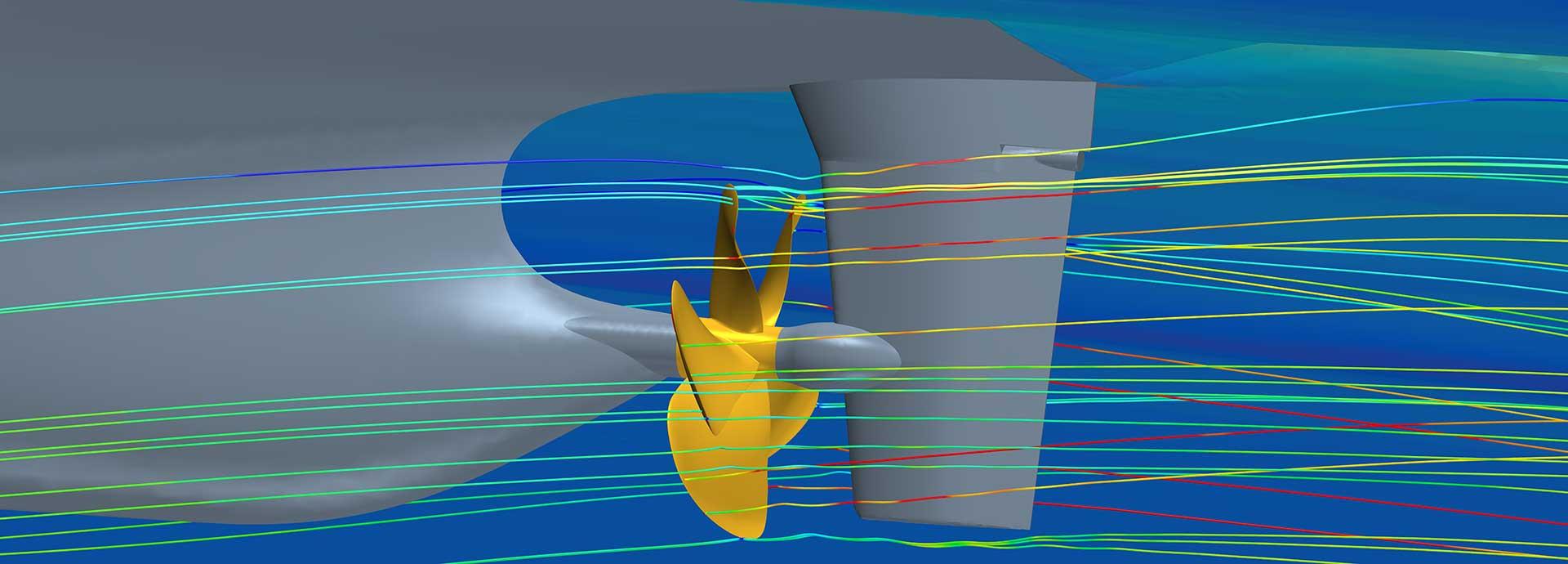

More powerful digital simulation is allowing Wärtsilä’s designers to fine-tune propeller shapes down to a few millimetres to meet owners’ exacting demands on efficiency, noise, and durability.
When Norbert Bulten started his career in Drunen, the Netherlands, they tested each new propeller shape by making a 20cm replica and using it to power an eight-metre model hull, sculpted out of wood. The process took four weeks and cost thousands of euros.
Twenty years later, it is all done by computer.
“Now, we can do it with commercial software in a few days, and I would say the accuracy is just as good, or even better,” says Bulten.
However, the increased ease and speed of testing is only the beginning. As simulation software, such as Siemens’ STAR-CCM+, gets ever more sophisticated and the computers which run it get more powerful, digital propeller design is opening up new possibilities.
Bulten and his team can now test the performance of new propeller designs together with different hull shapes, engines, and other components, in many different dynamic conditions, to maximise efficiency, reduce noise, increase durability, or find the perfect compromise.
In the past, propeller designers and naval architects worked in near isolation, the former focusing on getting the maximum thrust for a given input power, the latter focusing on the resistance of the vessel.
“What you would find is that there were interaction losses between the ship and the propeller, but no one was responsible for that,” Bulten explains. “My old boss used to describe it as a marriage between two partners; sometimes it works well and sometimes it doesn’t.”

It’s all about compatibility
Nowadays, the two partners’ compatibility can be thoroughly tested beforehand. Digital simulation techniques mean Bulten’s team can test the thrust of the propeller, together with the resistance of the ship, using the same Siemens software.
“We can really dive into this virtual world, we can really look at the velocity field, and the pressure distributions, and we can really understand what is happening.”
Propeller design always involves trade-offs. If an owner wants to minimise noise in, for example, a research vessel, that means shaping a propeller with minimum amount of cavitation. Cavitation can occur when the pressure in the water drops significantly, which happens near the blade tips. This is similar to boiling of water, but then at much lower temperature. Once the pressure has restored the vapour clouds collapse, which create noise and potentially damage.
Design measures to avoid this come in general with reduced efficiency. Whereas in the past, designers would leave wide margins to make absolutely sure to avoid cavitation, better digital simulation means it is now possible to get closer to the limits.
“Owners now want to have everything,” says Bulten. “The better the tools you have, the more you can identify the risks when reducing those margins.”
Owners also often want to minimise pressure fluctuations on the hull, again without compromising on thrust and efficiency. Bulten says digital simulation now allows designers to identify small tweaks to shape — a change of just a few millimetres in a 7.5m diameter, 40 tonne propeller — which can do this.
“There are fairly small changes in the design, to the leading edge of the blade, that can bring major changes to pressure fluctuations,” he says.

Banking on digital modelling
Bulten’s colleague in Drunen, Bert Schuurman, who makes digital models of propeller blades is key to this.
“He's a real magician with it. He turns the design information from our own software into a very nice 3D shape, and that geometry is the basis, not only for our simulations, but also for our whole manufacturing process.”
Wärtsilä’s factory can replicate the tiniest change in the propeller designs in the final 40 tonne product. “It’s a pretty impressive piece of bronze, and we are discussing shape tolerances down to a few millimetres,” he says.
The next stage in digital propeller simulation will be to take the vast amount of real-life ship performance data collected by Wärtilä’s Eniram subsidiary.
“If you have a real sailing ship, you can get a lot of data. This data can be compared to the vessel simulation model to analyse the performance of the propeller,” Bulten says. “We are getting closer to the real dynamics of a vessel.”
This will mean adding digital models of the engines, transmission and control systems, and even weather and sea conditions, to build giant simulations which ever more closely model actual, real-life operating conditions.
“The engine, transmission, propeller, and control system are four things that have to work together,” Bulten says. “That seems very logical, but there is still potential for improvements.”
Did you like this? Subscribe to Insights updates!
Once every six weeks, you will get the top picks – the latest and the greatest pieces – from this Insights channel by email.
